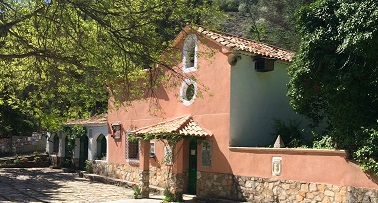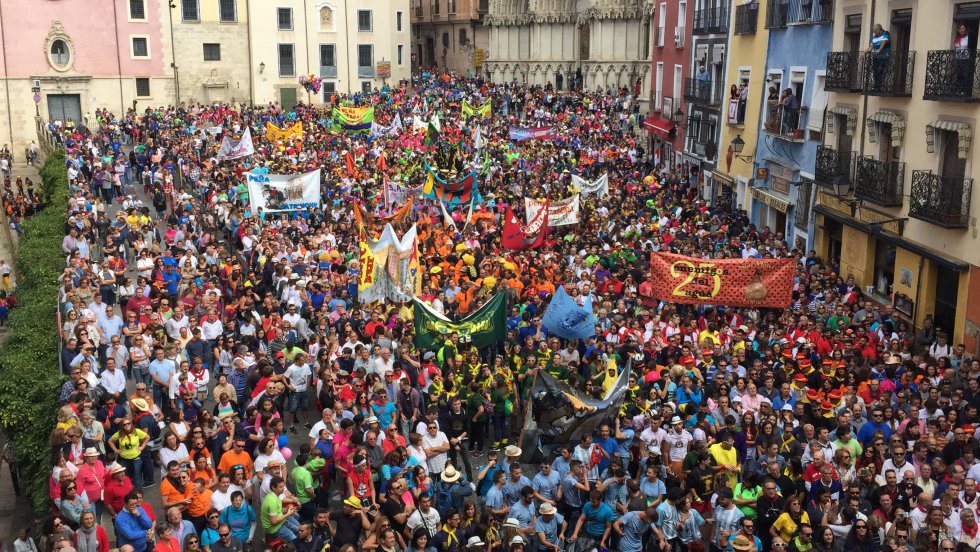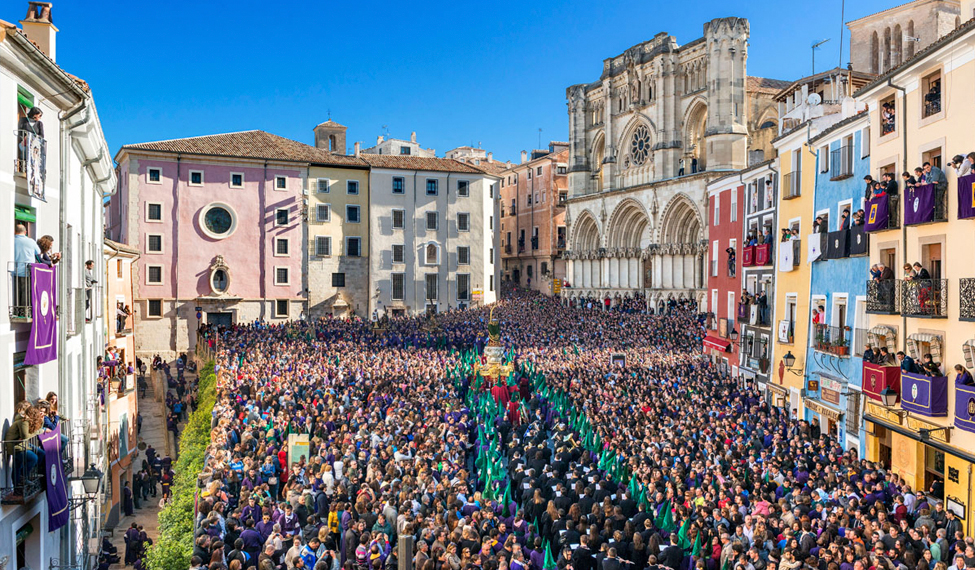En esta sección vamos a hablar sobre las fiestas más importantes de nuestra ciudad. En Cuenca celebramos muchas fiestas muy emblemáticas, algunas de ellas son muy importantes para Cuenca y para los conquenses, una de ellas la fiesta de San Julián que es el patrón de Cuenca y otra la fiesta de San Mateo en la cuál se celebra la conquista de Cuenca por parte de Alfonso VIII. A continuación os vamos a informaros sobre cada una de estas fiestas.
FIESTA DE SAN JULIÁN

San Julián fue el segundo obispo de cuenca. Tenía por costumbre, retirarse a una cueva situada en el Cerro de la Majestad, lugar que el Santo llamaba "el lugar de mi tranquilo día" de donde recibe el nombre de "cueva de San Julián el Tranquilo". Este lugar se eleva una pequeña ermita en honor a San Julián en donde se puede oir misa los domingos por la mañana, rodeada de una zona de mesas,barbacoas. Se puede llegar subiendo por un empinado escalerón o por una agradable senda de preciosas vistas a la hoz del Júcar y parte antigua de Cuenca. En la noche del 28 de enero de 1.208, murió San Julián. Desde entonces su sepulcro no ha dejado de ser visitado con frecuencia por sus numerosos devotos, encontrándose actualmente en la Catedral de Cuenca. El 28 de enero es fiesta local en Cuenca, y en agosto durante 10 días se celebran la ferias y fiestas de San Julián. Ese día, la gente sube a San Julián para pasar el día con su familia.
FIESTA DE SAN MATEO
The main festivity in Cuenca city commemorates its conquest by Alfonso VIII in 1177. Also known as "Las Vaquillas" (the heifers), its main appeal are the "enmaronadas" (held with a rope)fighting heifers, released around the city’s historical center, with their horns held with esparto or hemp ropes. The behavior of the "maromeros" (the people that control the ropes) allows those who dare to go and incite them to enjoy to the maximum. Besides, there are processions, parades of local clubs, and endless activities for all ages. Date of celebration on September 21th.Tasting the "zurra" a must; it is a drink made out of white wine, sugar and lemon, plenty of which you will find at every corner. To accompany it, roasted potatoes and sardines at their snack bars.

FIESTA SEMANA SANTA
Cuenca’s unique urban layout, with its hills and narrow streets, make it a very special setting to celebrate Easter week. These traditions date back to the 17th century, when the first Easter brotherhoods were founded. More than 30,000 people take part in the nine processions. The Camino del Calvario procession, which takes place in the early hours of Good Friday, is especially noteworthy. It is accompanied by the famous “turbas”: these are drums and trumpets that precede the statue of Jesus.
Religious devotion, art, colour and music combine in acts to commemorate the death of Jesus Christ: the processions. Members of the different Easter brotherhoods, dressed in their characteristic robes, parade through the streets carrying religious statues (pasos) to the sound of drums and music – scenes of sober beauty.Cuenca Religious Music Week coincides with the Easter week celebrations. Every year it features important international orchestras and soloists

VIDEOS
. https://www.youtube.com/watch?v=_0Eabijgivk
. https://www.youtube.com/watch?v=PMis9y15Qsw